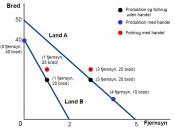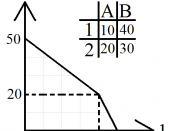�PAGE � �PAGE �1� International Trade Concepts
International Trade Concepts
Principles of Macroeconomics
�
Introduction
Supply and demand is a world-wide economic factor. Countries that demand a particular good but do not have the capabilities to produce the good themselves look elsewhere to satisfy the demand. International trade occurs when country A has something that country B wants and country B has something that country A wants. Both parties can be made better off by trade (Colander, 2004).
Advantages and Limitations of International Trade
International trade creates a more diversified trade market. One advantage of international trade is one country has the opportunity to move its surplus to another country that may be lacking in that particular commodity. Another advantage is that country A may need product X while country B has a surplus of product X. Country B may need product Y while country A has a surplus of product Y.
This is called comparative advantage. Both parties can be expected to benefit from the trade. The export of low-cost products and services allows countries to evaluate their economic strengths and to capitalize on them.
Limitations are imposed on international trade. There are three policies used to restrict trade. Tariffs are taxes on internationally traded goods. Quotas are quantity limits placed on exports. Regulatory trade restrictions are government-imposed procedural rules that limit imports. Without these restrictions in place, countries could dump their surplus products into the market which can lower the cost of the products resulting in a loss in that particular market.
The U.S. economy is currently financing its trade deficit by selling off assets (Colander, 2004). The United States has not always run in a trade deficit. International trade allows the U.S. to produce its manufactured goods in exchange for goods and products not able to be...


